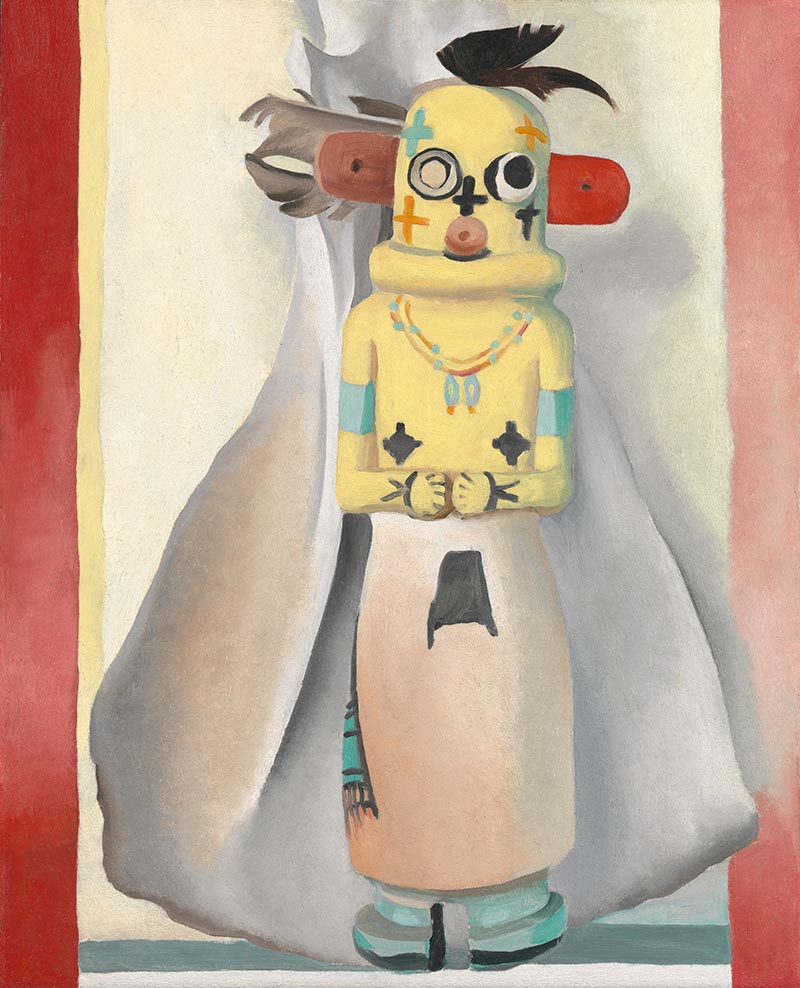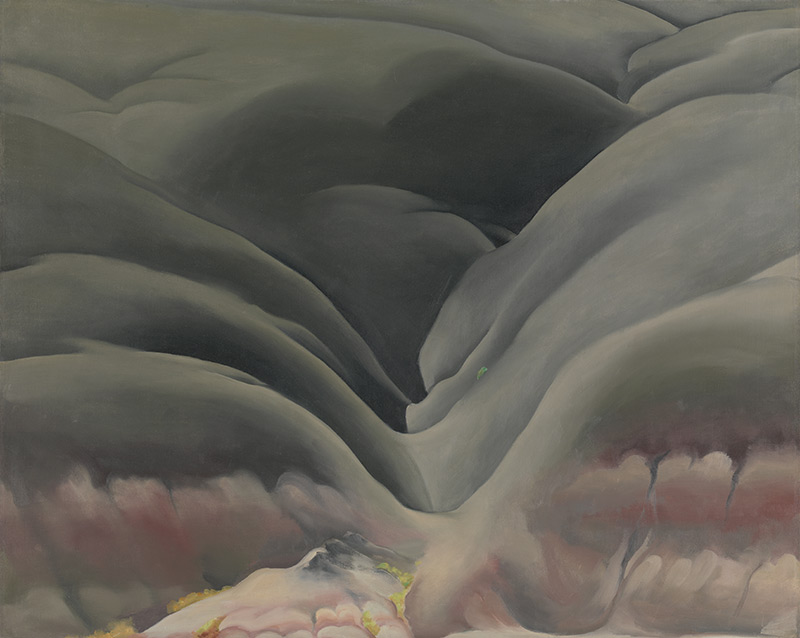Three works from the Vilcek Foundation Art Collection are currently on display at the Tate Modern, London, as part of the recently opened exhibition Georgia O’Keeffe. Featuring more than 100 works by the famed artist, the retrospective is the first solo institutional presentation of her work in the United Kingdom in more than 20 years.
Often called the “Mother of American Modernism,” Georgia O’Keeffe came to prominence during the 1920s after several of her works were exhibited by the influential gallerist (and her later husband) Alfred Stieglitz. Over a career that spanned more than 50 years, O’Keeffe helped revolutionize American art by pushing the limits of abstraction and influencing some of her most prominent contemporaries. Today, she is best known for her lush floral paintings, which are usually read as feminine in nature. The Tate’s retrospective aims to complicate this narrow and simplistic interpretation by presenting an overview of her extensive body of work.
Black Place II, 1945. Georgia O’Keeffe. Oil on canvas. H- 24 x W- 30 in. (61 x 76.2 cm).
A particular area of emphasis in the exhibition is O’Keeffe’s relationship to the American Southwest. In 1929, O’Keeffe traveled to New Mexico for the first time, beginning a series of frequent visits that culminated in her moving to the state in 1949. The region’s unique landscape and culture were both major sources of inspiration in her work. A central room in the Tate’s exhibition is devoted entirely to her depictions of locations within the state. Featured among them is “Black Place II”from the Vilcek Foundation American Modernism Collection. A favorite subject of O’Keeffe’s, the “Black Place” is an expanse of barren hills in the Bisti Badlands of northwest New Mexico. Completed in 1945, “Black Place II” is an exceptional example of O’Keeffe’s ability to abstract natural subjects in a way that intensifies, rather than obscures, their essential qualities.
The scenery was not the only characteristic that attracted O’Keeffe to New Mexico; she was also fascinated by the religions and customs of the region’s native peoples — a fact the exhibition does not overlook. O’Keeffe’s painting of a Hopi Kachina doll (a small figure that represents a spirit being) is displayed among other culturally inspired works. Titled simply “Kachina,” the painting of the small yellow figure was the first of seven studies of Kachina dolls O’Keeffe would execute between 1931 and 1946.

Kachina, 1931. Georgia O’Keeffe. Oil on wood panel. H- 20 5/8 x W- 16 in. (52.4 x 40.6 cm).
The exhibition also contains a few choice pieces by members of O’Keeffe’s artistic circle; these include Marsden Hartley’s “New Mexico Recollection #14” (also from the Vilcek Foundation American Modernism Collection), as well as works by Stieglitz, John Marin, and Paul Strand — all of which help viewers to better contextualize O’Keeffe’s work within the Modernist movement.
Georgia O’Keeffe will run at the Tate Modern’s recently opened London gallery from July 6–October 30, 2016, before traveling to Bank Austria Kunstforum from December 7–March 26, 2017, and completing its tour at the Art Gallery of Ontario from April 22–July 30, 2017.
